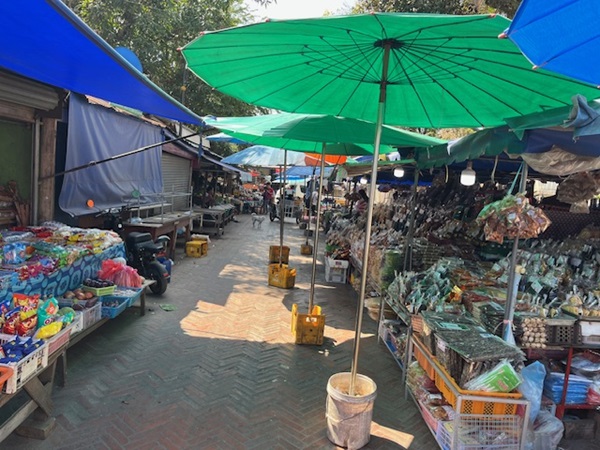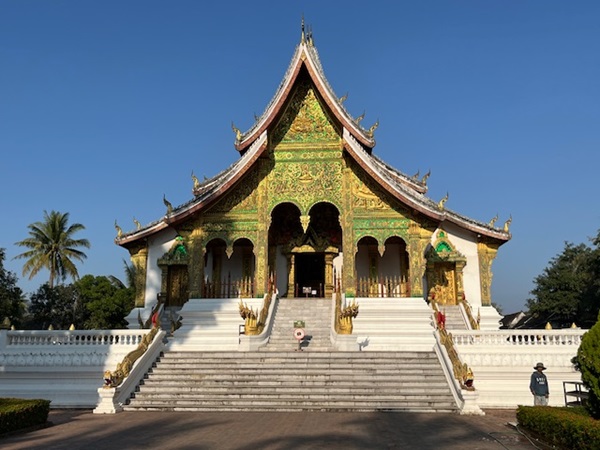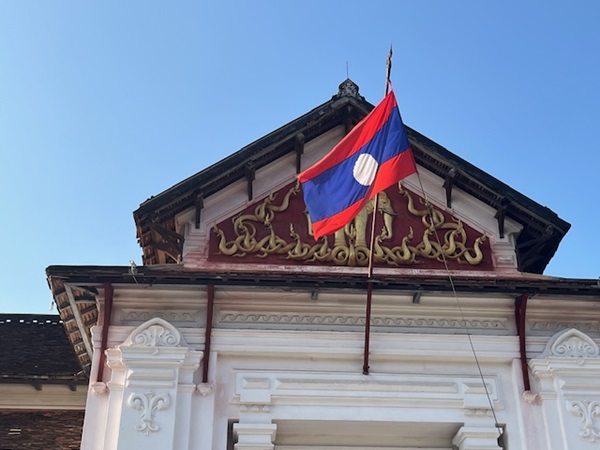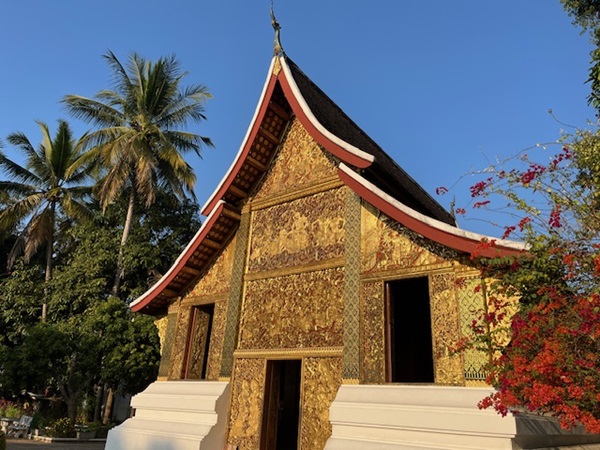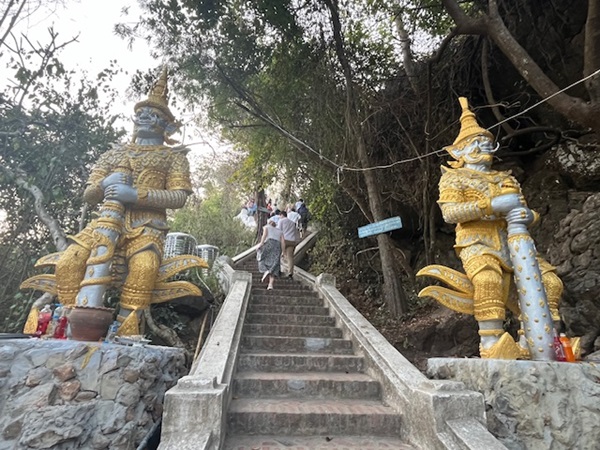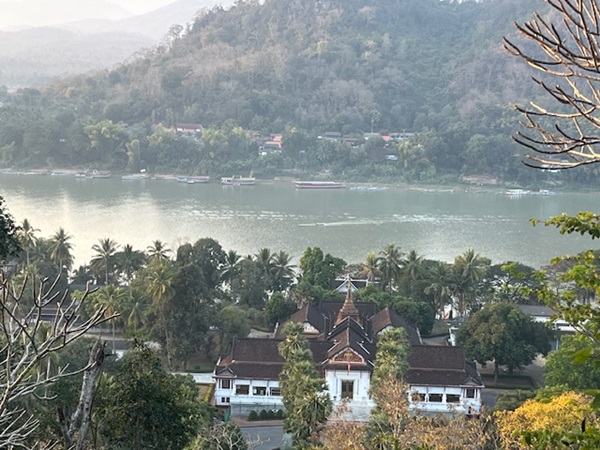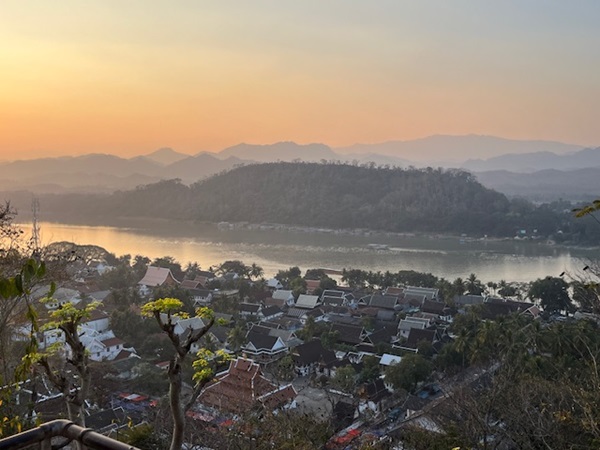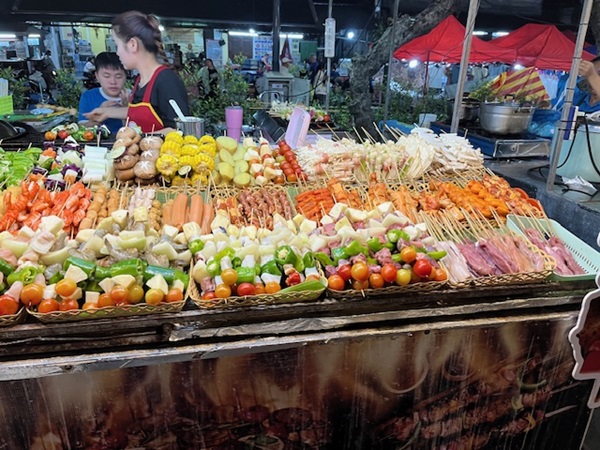 Laos Day 1: Luang Prabang, with delegation led by Minister Xavier Bettel;
Credit: Chronicle.lu
Laos Day 1: Luang Prabang, with delegation led by Minister Xavier Bettel;
Credit: Chronicle.lu
On Monday 5 February 2024, Luxembourg's Vice Prime Minister, the Minister for Foreign Affairs and Foreign Trade, and the Minister for Development Cooperation and Humanitarian Affairs commenced a four-day visit to Laos in south-east Asia, his first as Minister for Development Cooperation and Humanitarian Affairs.
Prior to this visit, the most recent one was in December 2022 when the former Minister for Development Cooperation and Humanitarian Affairs, Franz Fayot, accompanied His Royal Highness the Grand Duke on a working visit in the context of the 25th anniversary of diplomatic relations and development cooperation between Luxembourg and Laos.
Chronicle.lu was one of a small number of media representatives accompanying the official delegation which also included Ambassador Patrick Hemmer who is based in Bangkok but who is responsible for Thailand, Laos, Malaysia, Singapore and Vietnam; representatives of the Ministry of Foreign Affairs and Foreign Trade; Gustave Graas (DP) and Sven Clement (Pirate Party), both MPs, one from the government and one from the opposition; plus three representatives of Lux Development, including its director, Manuel Tonnar.
Laos
Laos is a land-locked country (like Luxembourg) with with a population of around seven million people. It borders Vietnam all along its western border, Cambodia to the south, Thailand the the west and both Myanmar and China to the north.
It has a population of around seven million people, compared to 96 million in Vietnam, 71 million in Thailand and 17 million in Cambodia.
Vientiane is the country's capital with a population of around one million people; Luang Prabang dates back to the 14th century and used to be the royal capital of the Kingdom of Laos; its temples display intricate architecture and its character has been influenced both by Buddhist and French colonial heritage.
Laos trades with its neighbours, Thailand, Vietnam and China; agriculture provides 80% of employment despite only 4% of the country being arable land, of which about 80% is used for growing rice. Laos is rich in mineral resources and it also exports hydroelectric energy. Tourism figures rose to just under 5 million people just before the pandemic hit.
Cooperation
The first cooperation projects between Luxembourg and Laos started in 1997, and were formalised by a general cooperation agreement in 2000. Currently the 5th four-year Indicitive Cooperation Programme (ICP) is underway with a €95m budget which has four priority areas: health and nutrition; local development; skills development for tourism, agriculture and forestry; and rule of law (access to justice and good governance).
Luxembourg focuses its activities on the four priority provinces of Bokeo, Bolikhamxay, Khammouane and Vientiane, and spent €20.29 million in 2022, split between bilateral cooperation (78.66%), multilateral cooperation (10.98%), NGOs (8.47%) and Humanitarian and Food action (1.89%).
Most of the Luxembourg's financing is to see long-term improvements. Interestingly, English is being spoken more now than French, and German too.
Arriving in Luang Prabang
Landing at the airport of the city of Luang Prabang in the north, a city of just over 400,000 inhabitants situated on the Mekong River, amongst a landscape of hills and mountains, one was immediately struck by the slow, laid back pace of life. The streets and roads were relatively empty, at least compared to cities in nearby Vietnam and Thailand, and the traffic consisted of tuk-tuks, mopeds, scooters and some cars, the majority of which were Toyotas, also some Kias and a few Fords. The roads were either concrete or tarmac, all two lanes and without a traffic light in sight.
After checking in to the hotel, refreshing after the flights and having a bite to eat, the delegation met up late afternoon for a cultural visit of Luang Prabang accompanied by a local guide.
First up was the Royal Palace Meuseum which includes the 83cm, 43kg Prabang Statue which dates from 1353. Then, to see the Wat Xieng Thong temple which dates back to 1560 and is one of the highest symols of Buddhism in Laos.
The climb up around 400 steps to Mount Phousi is worth it for the glorious sunsets - it is one of Luang Praband's nost well-known landmarks; during the Pimia Festival (Lao New year), the mountain becomes busy with pilgrims bringing flowers, incense and other offerings.
Back to the hotel by wandering through the night market, selling clothing, household goods and paintings with a new section set up as a giant outdoors food court, offering a range of cuisines with many stalls selling freshly squeezed juices.


